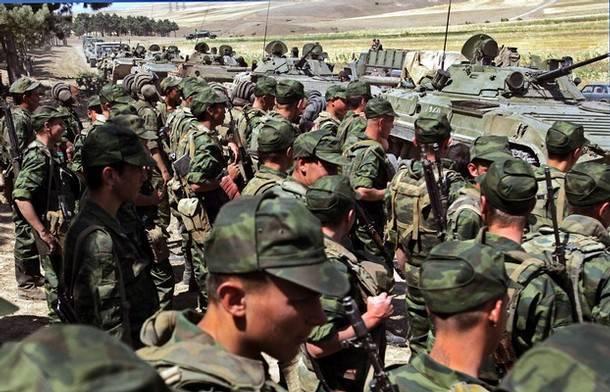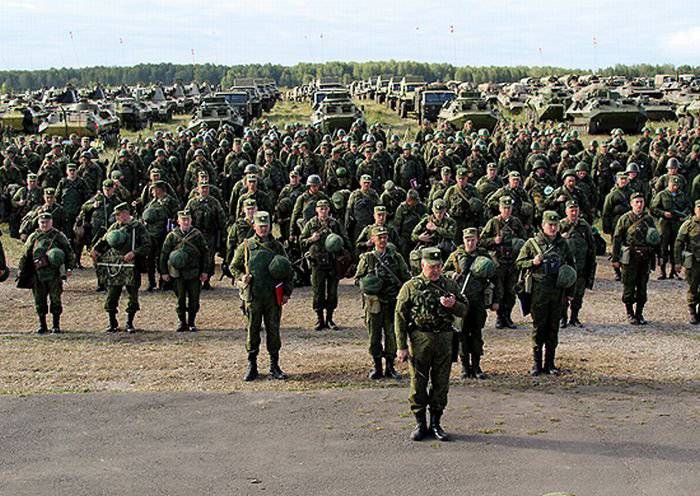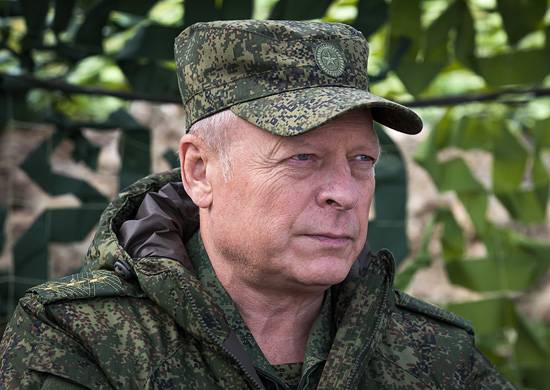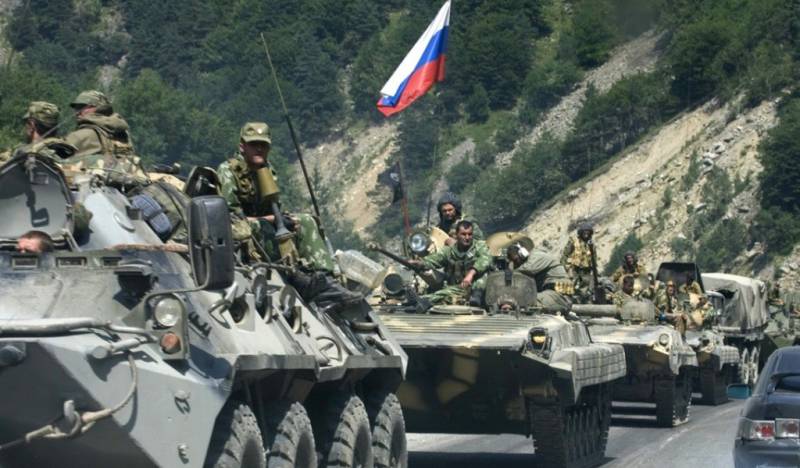Ground Forces of Russia. Glorious battle path, reform and future
The history of modern Russian ground forces has its roots in the Soviet period. It was after the end of World War II that the final formation of the Ground Forces as a separate type of the Armed Forces of the USSR took place. In 1946, Marshal of the Soviet Union Georgy Konstantinovich Zhukov was appointed the first commander in chief of the USSR Ground Forces. The ground forces of the Soviet Union remained the largest and most massive part of the Armed Forces of the USSR. The basis of their power was motorized rifle and tank troops.
The Ground Forces of the Armed Forces of the Russian Federation is the heir to the traditions and glorious military path of the Soviet Ground Forces. The official date for the creation of the Ground Forces of the Russian Federation is May 7, 1992. Automatically, the Armed Forces of the Russian Federation included units and formations of the Armed Forces of the USSR, directorates, institutions, military schools, which were located before the declaration of independence of Russia on the territory of the RSFSR. In addition, they included units and formations, institutions under Russian jurisdiction, but stationed in the Transcaucasian Military District, which were part of the Western, Northern, North-Western groups of forces, the Black Sea fleet, The Baltic Fleet, the Caspian Flotilla, the 14th Guards Army, military units located abroad in Germany, Mongolia, Cuba and some other foreign states. The total number of personnel amounted to more than 2,8 million people. Almost immediately after the formation of the Armed Forces of the Russian Federation, large-scale reductions in personnel began.
Already in 1992, more than 1 million people served in the Ground Forces, and a year later, in 1993, the Army troops numbered 900 thousand people. Abbreviations of the Armed Forces of the Russian Federation during the 1990-s were of a systemic nature. Tens of thousands of highly professional specialists — officers and ensigns — left the army. Many of them were very young people. The reserve was dismissed officers, not so long ago graduated from military schools. Some of them went to the police, to the new power structures - the Ministry of Emergency Situations, special services, many - to the security companies that were created, but most of them simply went to “the citizen”, where they implemented themselves in various professions.
Practically from the very first days of its existence, the Ground Forces of Russia had to participate in a number of armed conflicts in the post-Soviet space. The longest and most tragic of them was the restoration of constitutional order in the Chechen Republic. Tens of thousands of officers, warrant officers, sergeants and soldiers of the Russian ground forces passed through two Chechen campaigns. Motorized riflemen, tankmen, gunners, communications men, sappers, representatives of all other branches of the army who were part of the Ground Forces, took part in hostilities in the North Caucasus. Thousands of soldiers have given their lives there. At the same time, counter-terrorist operations in the North Caucasus have become an invaluable school of combat experience for the new generation of Russian military personnel, although, of course, it would be better to have such experience in modern Russian history. Hundreds of servicemen were awarded high state awards for their courage and heroism. Unfortunately, many were awarded posthumously ...

When peace was established in Chechnya, and the counter-terrorist operation in the North Caucasus acquired a much smaller scale than before, it seemed that a peaceful period was beginning in the life of the Russian army. But in 2008, the Ground Forces came to the aid of the people of South Ossetia. In this armed conflict, which went down in history as the “August 2008 War of the Year”, the servicemen again showed high professionalism and skill in solving combat missions.
Changes in the global and domestic political situation dictated the need to modernize the Russian Ground Forces. It was obvious that the Ground Forces, like all the Armed Forces of Russia as a whole, needed a large-scale reform. Of course, the reform of the Russian army was not without overlap and met with approval, as well as harsh criticism from both professional military and the general public. Especially criticized the actions of the Minister of Defense Anatoly Serdyukov, who prior to his appointment to the post was a purely civilian person who had extensive experience in leadership only in business and in tax authorities. It is Minister Anatoly Serdyukov and Army General Nikolai Makarov, who held the post of Chief of the General Staff of the Armed Forces of the Russian Federation during this period, among the main organizers and leaders of the grandiose reform of the Russian armed forces, held in 2008-2012.
By the time military reform began, the ground forces of the Russian Federation were serving 322 000 military personnel. In the 15 years that have passed since their creation, the size of this type of Russian Armed Forces has decreased by approximately 600 000 people. The number of ground forces divisions has decreased almost fourfold - from 100 in 1992 to 24 in 2008. However, the reduction of the Armed Forces was not accompanied by any large-scale organizational and structural changes that would radically distinguish them from the Soviet Army. This became the main problem that hampered the management of the Armed Forces in modern conditions.

So, by 2008, the Russian Ground Forces consisted of three tank, sixteen motorized rifle, five machine-gun and artillery divisions, twelve separate motorized rifle and rifle brigades, two military bases of the division. However, according to experts, of these 24 divisions, only five divisions and the 201-I military base stationed in Tajikistan were fully deployed. Of these five divisions, three were stationed in the North Caucasus Military District. Most land divisions had only one or two regiments deployed. That is, in fact, only a small part of the country's Land Forces could be attributed to the combat readiness forces. The remaining compounds were supposed, if necessary, to be completed by mobilization. At the same time, it was clear to many military specialists that such a structure does not meet the challenges of our time, which dictate the need for constantly combat-ready forces capable of solving assigned tasks as soon as possible.
In short, the essence of the military reform that took place in 2008-2012 was the modernization of the Russian armed forces and their transformation into forces of constant combat readiness, capable of carrying out an order at any time anywhere in the world. As subsequent events showed in the Crimea or in Syria, in many ways the leadership of the country really managed to achieve the goals set. As a result of the reform, large-scale reductions of central military command bodies were carried out, the number of officers was reduced, the institute of ensigns was liquidated and a partial transition to a contractual basis was made. However, not all of these decisions were subsequently recognized as adequate to the needs of the Russian armed forces. In particular, the liquidation of the institute of ensigns was subjected to large-scale criticism. In fact, Russian ensigns served not only in warehouses, canteens and checkpoints. Most of them were nevertheless high-class specialists, with great service and often combat experience. The foremen of the company and the batteries, platoon commanders, technical specialists — can it be said that they all needed to be reduced or translated into the category of sergeants? In addition, the creation of the institute of professional sergeants was faced with numerous organizational difficulties.
The military reform initiated by Anatoly Serdyukov was to be adjusted by his successor as defense minister to Army General Sergei Shoigu. He, in particular, in 2013, voiced the return of the institute of ensigns and warrant officers in the Armed Forces of the Russian Federation. 1 July 2013 was introduced a new staffing, in which there were posts for ensigns and midshipmen. These are only commanding and technical posts, for example, the commander of a service platoon or the commander of a combat vehicle, a company technician or the head of a radio station, etc.
As you know, during the leadership of the Ministry of Defense of the Russian Federation, Anatoly Serdyukov, the Russian army was also transferred to the brigade base. Army, corps and divisional links were liquidated in the Ground Forces. The authors of the reform explained this decision by the need to increase the mobility and efficiency of the troops. In 2009, the 23 ground forces divisions were disbanded. Only one machine-gun artillery division remained in the Kuriles, as well as the 201 military base. 40 deployed brigades and brigade military bases were created instead of divisions. By the end of 2009, 85 brigades were created. It was possible to achieve 95% - 100% of their staffing, which turned all these brigades into combat readiness units. The reserve component of the ground forces remained military bases where military equipment was stored. On their basis, it was possible to deploy additional connections in the event of such a need.
However, in 2013, the revival of divisions in the ground forces began to be actively discussed. Soon the whole country was convinced that these were not just rumors. Defense Minister Sergei Shoigu revived the glorified Taman and Kantemirov divisions. In July, 2016, Mr. Shoigu, announced the formation of four new divisions in the ground forces. Thus, the Russian army returns to the usual divisional structure, at the same time, without abandoning the brigade. The need to create new divisions is dictated by the political situation itself. After the coup in Kiev and the beginning of the armed conflict in the Donbas, on the border with Russia, a new restless neighbor appeared, from which everyone can be expected. As the attacks of Ukrainian saboteurs in the Crimea showed, it is quite possible to expect armed provocations from a neighbor. In order to cover the strategic directions and form new divisions. One of them will be located on the territory of the Rostov region, where military camps and test sites are already being built for it.
 A great achievement in the direction of strengthening the combat capability of the Ground Forces was the supply of new military equipment. In recent years, the weapons of the Russian army have been seriously updated. The air defense systems of the ZRS C-300-B4, MANPADS “Verba”, the air defense system “Tor-M2”, “Buk-M2” and “Buk-M3” were put into service; Interspecific artillery complex "Coalition-SV", reactive MLRS of the new generation "Tornado-S", volley fire system "Tornado-G", self-propelled ATGM "Chrysanthemum-S", OTRK "Iskander", which is already armed with several Russian ground brigades troops.
A great achievement in the direction of strengthening the combat capability of the Ground Forces was the supply of new military equipment. In recent years, the weapons of the Russian army have been seriously updated. The air defense systems of the ZRS C-300-B4, MANPADS “Verba”, the air defense system “Tor-M2”, “Buk-M2” and “Buk-M3” were put into service; Interspecific artillery complex "Coalition-SV", reactive MLRS of the new generation "Tornado-S", volley fire system "Tornado-G", self-propelled ATGM "Chrysanthemum-S", OTRK "Iskander", which is already armed with several Russian ground brigades troops. Thus, in almost a quarter of a century of its existence, the Russian ground forces have gone through a difficult, full of victories and bitterness. Currently, they remain the backbone of the Russian armed forces. According to open sources, by the 2016 year in the Ground Forces of the Russian Federation served about 395 000 people. Thus, the number of troops in comparison with 2008 year increased significantly. The Ground Forces consist of 11 armies deployed in the territories of four military districts - Western, Southern, Eastern and Central. The Ground Forces include motorized rifle, tank, rocket and artillery troops, air defense troops, and special forces. They consist of combined-arms armies, motorized rifle and tank divisions, machine-gun and artillery divisions, tank, motorized rifle, air assault brigades, covering brigades, military bases, units and formations of rocket forces and artillery, air defense, special forces.
The Commander-in-Chief of the Land Forces of the Russian Federation is currently Colonel-General Oleg Salyukov (pictured). An experienced military leader, Oleg Leonidovich Salyukov took this high post on May 2 of 2014. Before being appointed commander-in-chief, Saliukov from 2010 to 2014. served as deputy chief of the General Staff of the Armed Forces of the Russian Federation, and in 2008-2010. commanded the troops of the Far Eastern Military District. In the 2006 year, when he was the chief of staff of the Far Eastern Military District, Oleg Salyukov was given the military rank of "Colonel General". In 2014, 2015 and 2016 Colonel-General Salyukov commanded military parades on Victory Day and held on Red Square in Moscow.
On the festive Day of the Russian Ground Forces, servicemen, troop veterans, civilian civilian personnel need to wish valiant service and good spirits, health, success in all endeavors, and most importantly - do without losses.

Information